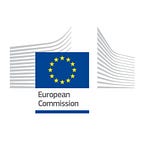Future of Europe’s defence
The reflection paper on the future of European defence is the fourth one in the series, launched by the European Commission on 7 June 2017. It outlines possible scenarios of Europe’s defence, contributing to the debate on strengthening the protection of European citizens.
Here are its highlights.
Historical context and the recent challenges
Rising from the ashes of two World Wars that took 80 million lives, the European Union was inspired by a vision of lasting peace on the European continent.
Most Europeans have enjoyed a peace spanning seven decades, the longest period in Europe’s troubled history. However, the rising instability in Europe’s neighbourhood as well as globally presents important challenges for our security.
Peace and security at home can no longer be taken for granted in a world in which global and regional powers re-arm, terrorists strike at the heart of cities in Europe and around the world.
Technological threats
Technological change is also dramatically transforming the nature and face of security and defence. Big data, cloud technology, as well as unmanned vehicles and artificial intelligence are revolutionising the defence sector.
However, having such relatively accessible technology also enables the rapid rise of non-conventional, transnational and asymmetric threats, such as hybrid, terrorist, cyber, chemical, biological and radiological attacks.
European citizens are concerned about their safety
Opinion polls show security has become the number one concern for most European citizens; and the citizens look to the Union for protection. If we want to deliver on their expectations, security and defence must play a more prominent role in the future of the European project.
In a connected, contested and complex world, EU countries are simply too small to deliver on their own. Continental-sized powers are far better equipped than small-to-medium sized countries.
Building on the progress, it is time to consider the concrete ambitions with respect to the future role of the Union in security and defence.
Blend of soft and hard power
One of the major strengths of the EU’s approach is its blend of soft and hard power. It uses security and defence instruments alongside diplomacy, sanctions, development cooperation and trade aimed at preventing conflict. It promotes peace, inclusive growth, human rights, rule of law, and environmental protection at home and abroad.
Three future scenarios for Europe — moving towards a security and defence union
A number of strategic, political, economic and technological trends suggest the time is ripe for a European step change in the security and defence field.
The following scenarios are not mutually exclusive, but illustrate three different levels of ambition in terms of solidarity. Some of the elements mentioned in the scenarios are currently already examined or implemented.
1. Security and defence cooperation scenario
In this scenario, the EU27 Member States would cooperate on security and defence more frequently than in the past. EU countries would still decide on the need for security and defence cooperation on a voluntary and case-by-case basis, while the EU would continue to complement national efforts. Defence cooperation would be strengthened, but the EU/NATO cooperation would retain today’s format and structure.
2. Shared security and defence scenario
Under this more ambitious scenario, the EU27 Member States would move towards shared security and defence. The EU would take on a greater role in areas like cyber, border protection or the fight against terrorism, and strengthen the defence and security dimension of internal EU policies like energy, health, customs or space. The EU and NATO would also increase mutual cooperation and coordinate across a full spectrum of issues.
3. Common defence and security scenario
The most ambitious scenario foresees the progressive framing of a common union defence policy. Under this scenario, EU countries would undertake greater commitments to each other’s security, making Europe’s protection a shared responsibility of the EU and NATO. The EU would be able to run high-end security and defence operations, underpinned by a certain level of integration of EU countries’ defence forces.
Enhancing European security is a must. EU countries will be in the driving seat, defining the level of ambition with the support of the EU institutions.
But how quick do the EU countries want to build a genuine European Security and Defence Union? To which extent are they willing to anticipate rather than to react to the strategic context? How far do they consider that the European security is a European responsibility?
For a more exhaustive analysis backed by concrete facts and figures, read the full reflection paper, available in all EU languages. To get informed about Europe’s external action, read about the Commission’s priority — A stronger global actor.
For the summaries covering three previous reflection papers, read our stories about Europe’s social dimension, the European perspective on globalisation and the story of the euro.
